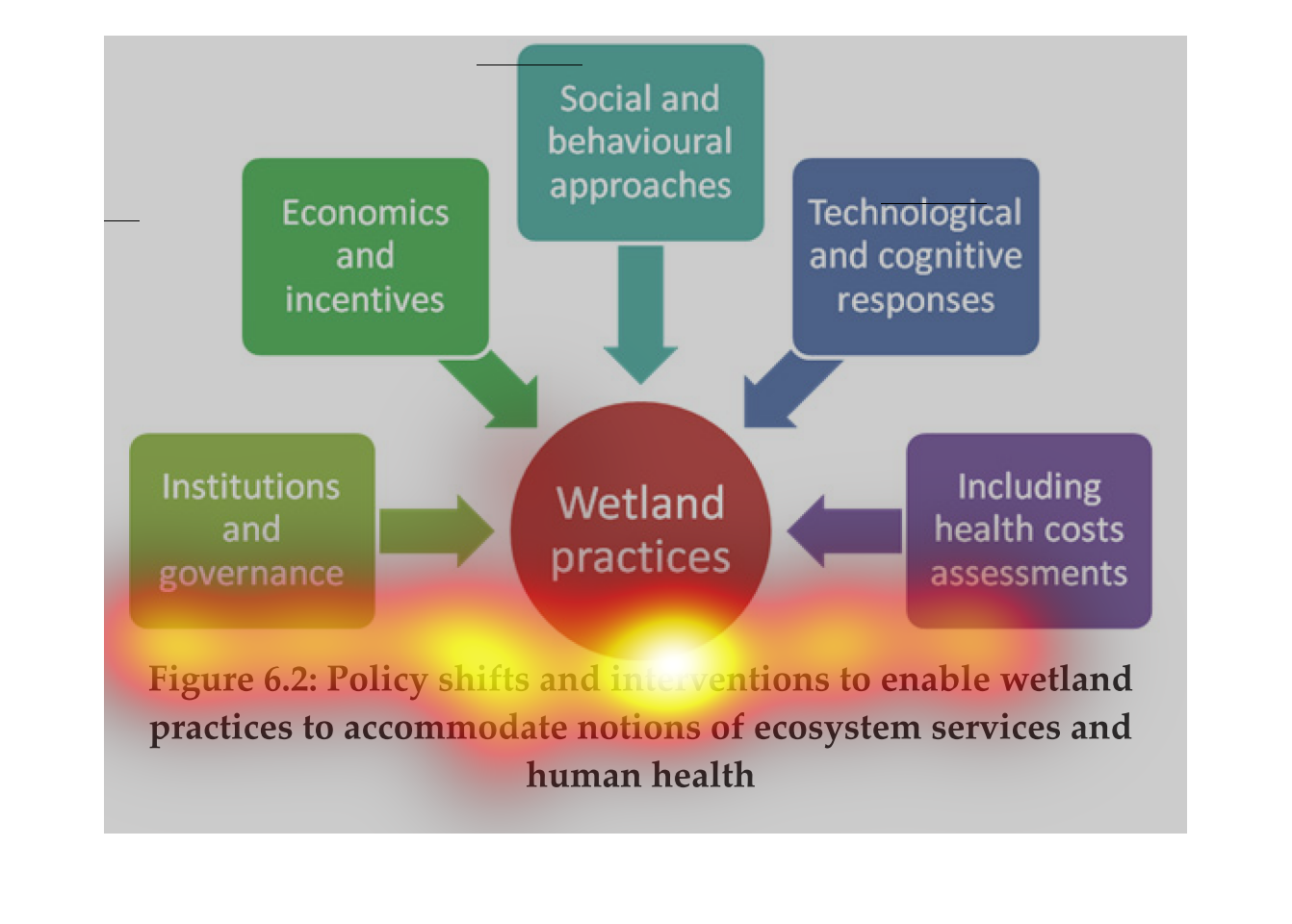
This chart describes wetland practices. Categories on the chart include social and behavioral
approaches, economics and incentives, technological and cognitive responses.


an infographic with wetland practices at the center, the following things are pointing at
the center; institutions and governance, economics and incentives, social and behavioral approaches,
technology and cognitive responses, including health costs and assessments


This graphic relates to policy shifts around wetlands to enable practices to better serve
policy changes and human health. It's a chart that shows all types of factors that affect
the total change of policies around wetland areas. It's very difficult to read in this bubble
format.


The chart shows that the policy shifts and interventions to enable wetland practices to accomodate
notions of ecosystem services and human health. Wetlands practices, Institutions and governance,
economic and incentives, social and behavioural approaches, technological and cognitive responses
and including health costs assessments.


This chart details the interventions done over the years to protect the wetlands. The measures
provided are Institutional and Governance, Economics and Incentives, Social and Behavioral
Approaches, Technological and Cognitive Advancements, and Including Health Costs Assessments.


This chart describes Wetland Practices.. It's a brainstorming chart that breaks these practices
into five different categories; Institutions and Governance, Economics and Incentives, Social
and Behavioral Approaches, Technology and Cognitive Responses, and Including Health Costs
Assessments. These five categories represent policy shifts to accommodate human ecological
systems and human health.


This chart describes wetland practices. Categories on the chart include social behavioral
approaches, economics and incentives, and institutions and governance.


The image shows policy shifts and interventions to enable wetland practices to accommodate
notions of ecosystem services and human health. The methods are including health costs assessments,
institution and governance, economics and incentives, social and behavioral approaches, and
technology and cognitive responses.


This is a chart that shows the various effects of methods used in wetland practices. It shows
that there needs to be a focus on specific policy changes.


This is a diagram showing the different aspects of Wetland Practices and how they are related
to preservation of ecosystems and advancement of human health. Each aspect is directed toward
the central topic of Wetland Practices. The Wetland Practices central theme is represented
by a red circle, while the aspects are represented by different color boxes with arrows pointing
towards the central theme.


This chart illustrates policies and shifts that are being made to enable wetland practices
to accommodate human services and has categories such as institutional and governance and
economic and incentives.


This shows policy shifts/intentions to enable wetland practices in order to accommodate notions
of ecosystem services. There are five practices affecting the wetland: including health cost
assessment, technological/cognitive responses, social and behavioral approaches, economics
and incentives, and institutions and governance.


This is a mind map that describes various wetland practices. There is a central idea in the
bottom middle of the image and then there is five ideas branching off from fit.


The figure presented is titled figure 6.2: policy shifts and interventions enable wetland
practice to accommodate notions of ecosystem services and human health.






























